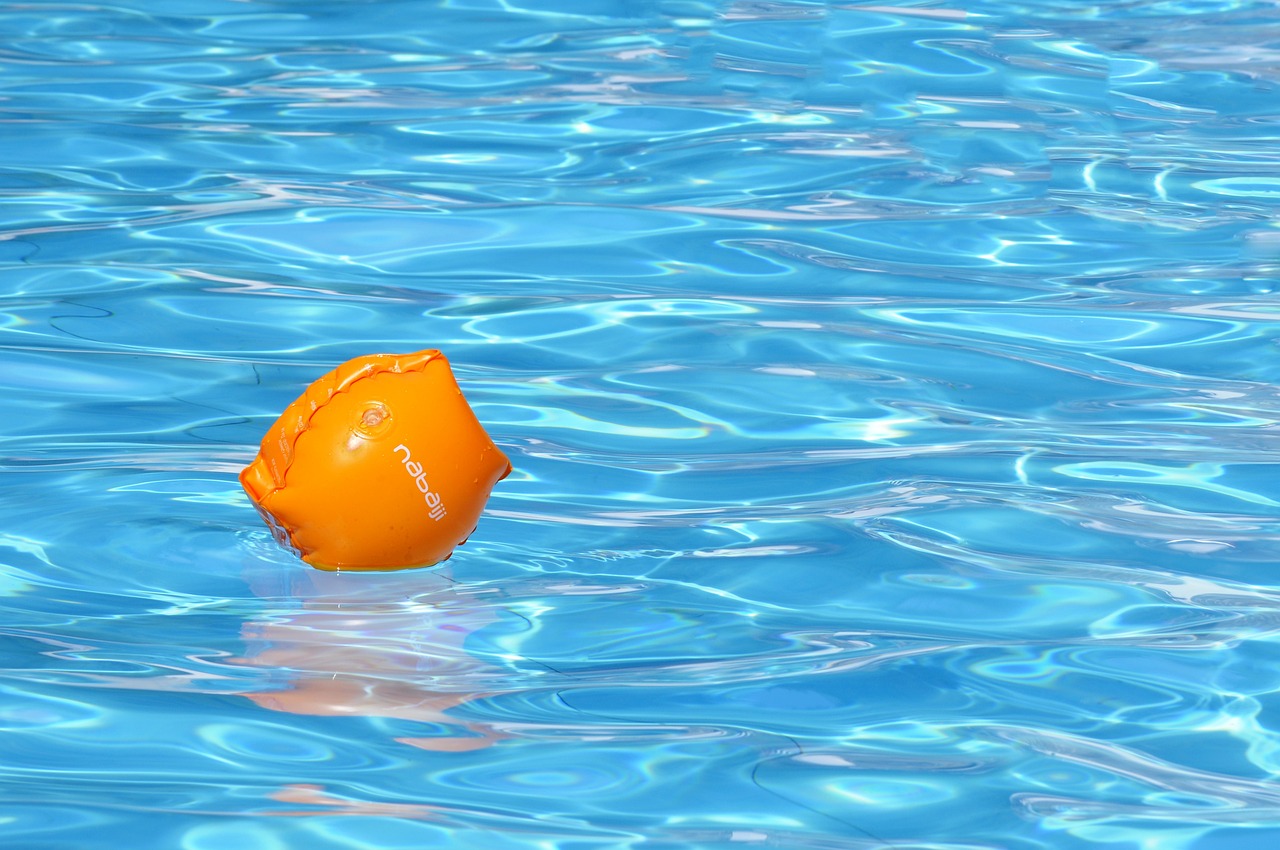This article provides a comprehensive guide on acid washing a pool, detailing the benefits, necessary preparations, safety precautions, and step-by-step instructions for achieving a pristine swimming environment.
Acid washing is a vital process in pool maintenance that involves applying a diluted acid solution to the pool’s surface. This technique is particularly effective in removing stubborn stains, algae, and mineral deposits that standard cleaning methods often fail to eliminate. Over time, pools can accumulate various contaminants that not only affect their appearance but also the quality of the water. Understanding this process is essential for maintaining a healthy and inviting swimming environment.
- Restoring the Pool’s Appearance: Acid washing rejuvenates the pool’s surface, restoring its original color and shine. This is especially beneficial for pools that have become dull and stained over time.
- Improving Water Quality: By eliminating contaminants from the pool’s surface, acid washing enhances water clarity and quality, ensuring a healthier swimming experience.
- Prolonging the Life of the Pool Surface: Regular acid washing helps maintain the integrity of the pool surface, preventing damage from stains and mineral buildup.
Identifying the appropriate time for acid washing is crucial for effective maintenance. Factors such as water clarity, visible stains, and seasonal changes indicate when it’s necessary. Common signs include:
- Visible stains on the pool surface
- Persistent algae growth
- Cloudy or murky water
Having the right tools is vital for an effective acid wash. Essential equipment includes:
- Pressure Washer: Ideal for removing debris and applying acid solution.
- Pool Brush: Necessary for scrubbing the pool surface.
- Garden Hose: Used for rinsing the pool after acid application.
Additionally, safety gear such as gloves, goggles, and masks should be worn to protect against harmful chemicals.
Following a systematic approach is key to effectively acid washing your pool. The process can be broken down into several manageable steps:
- Preparing the Pool: Drain the pool, remove debris, and test the water chemistry.
- Mixing the Acid Solution: Carefully mix the acid with water, following the manufacturer’s guidelines for dilution.
- Applying the Acid: Use a pressure washer to apply the acid solution evenly across the pool surface.
- Scrubbing the Surface: After allowing the acid to sit, scrub the surface thoroughly to remove stains.
- Rinsing: Rinse the pool thoroughly with water to remove any acid residue.
After acid washing, proper maintenance is crucial to keep the pool clean. Here are some tips:
- Balancing Pool Chemicals: Test and balance the pool chemicals to maintain water quality.
- Regular Cleaning Schedule: Establish a routine cleaning schedule to minimize the need for future acid washes.
Avoiding common pitfalls can enhance the effectiveness and safety of the acid washing process. Key mistakes include:
- Neglecting Safety Precautions: Always wear appropriate safety gear to prevent injuries.
- Overusing Acid Solutions: Using excessive acid can damage the pool surface; follow guidelines for safe application.
While acid washing is effective, several alternative methods can also maintain pool cleanliness:
- Pressure Washing: A pressure washer can clean surfaces effectively without the harshness of acid.
- Enzyme-Based Cleaners: These gentler options break down organic materials without the need for harsh chemicals.
Understanding the costs associated with acid washing is essential for budgeting. Factors influencing pricing include:
- DIY vs. Professional Services: Weigh the pros and cons of each option to determine the best approach for your needs.
- Average Costs: Costs can vary based on pool size and condition, so it’s important to get estimates before proceeding.

What is Acid Washing and Why is it Necessary?
Understanding acid washing is a vital aspect of effective pool maintenance. This specialized cleaning process is designed to eliminate persistent stains, algae, and mineral deposits that standard cleaning methods often fail to address. By utilizing acid washing, pool owners can restore their pool’s appearance and ensure a safe swimming environment.
Acid washing involves the application of a diluted acid solution, typically muriatic acid, to the pool’s surfaces. This technique is particularly useful for pools with plaster finishes, as it not only removes unsightly blemishes but also rejuvenates the surface. Over time, pools can accumulate various contaminants, including metals from water sources and organic matter. These deposits can lead to discoloration and a dull appearance, which can detract from the overall enjoyment of the pool.
One of the primary reasons acid washing is necessary is its effectiveness in combating algae growth. Algae can thrive in warm, stagnant water, and even with regular cleaning, it can persist on pool surfaces. Acid washing provides a thorough cleansing that helps to eliminate these stubborn organisms, ensuring that your pool remains hygienic and inviting.
Additionally, mineral deposits, such as calcium buildup, can form over time, creating rough textures that are not only unsightly but can also be uncomfortable for swimmers. Acid washing smoothens these surfaces, making them more pleasant to the touch and preventing potential damage to pool equipment.
Regular maintenance is crucial for prolonging the lifespan of your pool. Acid washing, when performed appropriately, can significantly enhance the durability of the pool surface by preventing long-term damage caused by staining and mineral accumulation. This proactive approach not only saves money in the long run but also enhances the overall aesthetic appeal of your pool.
In conclusion, understanding the importance of acid washing is essential for every pool owner. By incorporating this method into your maintenance routine, you can achieve a sparkling clean pool that is both safe and visually appealing.

Benefits of Acid Washing Your Pool
Acid washing is a critical maintenance process for swimming pools that offers numerous benefits. As pool owners, understanding these advantages can help you make informed decisions about your pool care routine. Below, we explore the key benefits of acid washing your pool in detail.
- Restoring the Pool’s Appearance: One of the most noticeable benefits of acid washing is its ability to restore the pool’s original beauty. Over time, pools can become stained and discolored due to algae growth, mineral deposits, and other contaminants. Acid washing effectively removes these blemishes, leaving the surface looking fresh and inviting. This rejuvenation not only enhances the visual appeal but also increases the overall enjoyment of your swimming space.
- Improving Water Quality: Acid washing plays a crucial role in enhancing water quality. By eliminating the buildup of dirt, algae, and other impurities from the pool surface, the process helps to improve water clarity and hygiene. Clean surfaces mean that the pool’s filtration system works more efficiently, reducing the risk of cloudy water and ensuring a healthier swimming environment for you and your family.
- Prolonging the Life of the Pool Surface: Regular acid washing can significantly extend the lifespan of your pool’s surface. By removing harmful minerals and stains that can cause deterioration over time, acid washing helps maintain the integrity of materials such as plaster, tile, and concrete. This proactive approach to pool maintenance can save you money in the long run by reducing the need for costly repairs or resurfacing.
- Preventing Algae Growth: Algae can be a persistent problem in pools, especially in warm weather. Acid washing effectively removes the residues that provide a breeding ground for algae, making it less likely to return. This preventive measure not only keeps your pool cleaner but also saves you from the hassle of frequent cleaning and chemical treatments.
- Enhancing Safety: A clean pool is a safe pool. Acid washing eliminates slippery substances and stains that can pose safety hazards for swimmers. By ensuring a clean and clear pool surface, you create a safer environment for family and friends to enjoy.
In summary, acid washing your pool offers a multitude of benefits that go beyond mere aesthetics. From restoring its appearance and improving water quality to prolonging the life of the surface and enhancing safety, the advantages are clear. Regular acid washing should be an essential part of your pool maintenance routine, ensuring that your swimming oasis remains a beautiful, safe, and enjoyable place for years to come.
Restoring the Pool’s Appearance
One of the most significant advantages of acid washing a pool is its remarkable ability to restore the pool’s original appearance. Over time, pool surfaces can become dull and discolored due to various factors, including algae growth, mineral deposits, and general wear and tear. This degradation not only affects the visual appeal of the pool but can also impact the overall swimming experience.
When a pool is first installed, its surface often has a vibrant and clean look that enhances the surrounding landscape. However, as time passes, this pristine condition can fade. Stains from leaves, dirt, and even sunblock can accumulate, leading to a cloudy and uninviting appearance. Acid washing serves as an effective remedy for these issues, rejuvenating the pool’s surface and restoring its original luster.
The process of acid washing involves using a diluted acid solution to strip away the top layer of the pool surface, effectively removing stains and buildup. This not only brings back the pool’s original color but also smooths out rough patches that may have developed over time. As a result, the pool not only looks better but also feels more pleasant to swim in.
Moreover, acid washing can enhance the reflective quality of the water, making it appear clearer and more inviting. A clean, well-maintained pool can significantly improve the overall aesthetic of your backyard, making it a more enjoyable space for relaxation and entertainment.
It’s important to note that acid washing should not be performed too frequently, as it can wear down the surface material if done excessively. Typically, a pool may need acid washing every few years, depending on its usage and maintenance routine. Regular cleaning and proper maintenance can help prolong the time between acid washes, ensuring the pool remains in excellent condition.
In conclusion, the benefits of acid washing extend beyond mere aesthetics. By restoring the pool’s appearance, you create a more enjoyable swimming environment and contribute to the longevity of the pool’s surface. Whether you’re preparing for the swimming season or simply looking to refresh your pool’s look, acid washing can be a valuable part of your maintenance routine.
Improving Water Quality
Maintaining a clean and clear swimming pool is essential for the health and enjoyment of its users. One of the most effective methods for achieving this is through acid washing, a process that significantly enhances water quality. Over time, pools can accumulate various contaminants, including algae, mineral deposits, and other organic materials that can cloud the water and create an unhealthy environment. Acid washing addresses these issues by thoroughly cleaning the pool surface, leading to numerous benefits for both the pool and its users.
- Removal of Stains: Acid washing effectively eliminates stubborn stains that regular cleaning cannot tackle. These stains can be caused by metals, algae, or other contaminants that settle on the pool surface. By removing these stains, the pool not only looks better but also reduces the risk of algae growth, which can further compromise water quality.
- Enhanced Clarity: One of the most noticeable benefits of acid washing is the improvement in water clarity. A clean pool surface allows for better light penetration, which helps to create a more inviting swimming environment. Clear water is not only aesthetically pleasing but also indicates that the pool is free from harmful bacteria and contaminants.
- Improved Chemical Balance: Acid washing can help restore the chemical balance of the pool water. When contaminants build up on the pool surface, they can affect the overall chemistry of the water, leading to imbalances that can result in skin irritation and other health issues for swimmers. By removing these contaminants, acid washing allows for easier maintenance of proper chemical levels.
- Longer Lasting Pool Equipment: A cleaner pool means less strain on filtration systems and other pool equipment. When contaminants are allowed to accumulate, they can clog filters and strain pumps, leading to costly repairs or replacements. Acid washing helps to mitigate these issues, ensuring that pool equipment operates efficiently and lasts longer.
- Healthier Swimming Environment: Ultimately, the primary goal of improving water quality is to create a healthier swimming environment. Acid washing removes harmful bacteria and algae that can thrive in dirty pool conditions, reducing the risk of infections and illnesses among swimmers. This process promotes a safer and more enjoyable experience for everyone using the pool.
In conclusion, acid washing is a vital maintenance practice that significantly improves water quality in swimming pools. By effectively removing contaminants and buildup from the pool surface, it enhances clarity, restores chemical balance, and creates a healthier swimming environment. Regular acid washing not only prolongs the life of the pool and its equipment but also ensures that swimmers can enjoy a safe and pleasant experience. For pool owners, understanding the importance of this process is key to maintaining a pristine and inviting swimming area.
Prolonging the Life of the Pool Surface
Maintaining a swimming pool involves more than just regular cleaning; it requires a comprehensive approach to ensure the longevity of the pool surface. One effective method to achieve this is through regular acid washing. This process not only enhances the pool’s aesthetic appeal but also plays a crucial role in extending the lifespan of the pool surface.
- Understanding Acid Washing: Acid washing involves the application of a diluted acid solution to the pool’s surface, which effectively removes tough stains, algae, and mineral deposits that accumulate over time. These contaminants can lead to surface degradation if left untreated.
- Preventing Long-Term Damage: Over time, stains and mineral deposits can etch into the pool surface, leading to irreversible damage. Regular acid washing helps to prevent such long-term issues by keeping the surface clean and smooth.
- Enhancing Surface Integrity: By removing harmful substances, acid washing maintains the integrity of the pool surface. This is particularly important for plaster and concrete pools, which can become rough and porous without proper maintenance.
- Cost-Effectiveness: Investing in regular acid washing can save pool owners money in the long run. By prolonging the life of the pool surface, it reduces the need for expensive repairs or resurfacing, which can be a significant financial burden.
How Often Should You Acid Wash?
The frequency of acid washing depends on several factors, including pool usage, water chemistry, and environmental conditions. Generally, it is recommended to acid wash your pool every 1 to 3 years. However, if you notice signs of staining or buildup, it may be necessary to perform this maintenance more frequently.
Signs that your pool may need acid washing include:- Visible stains or discoloration on the surface- Cloudy or murky water despite regular cleaning- Persistent algae growth that does not respond to standard treatment
Safety Precautions During Acid Washing
When performing acid washing, safety should be a top priority. Here are essential precautions to consider:
- Protective Gear: Always wear appropriate safety gear, including gloves, goggles, and a mask, to protect against harmful fumes and skin contact with acid.
- Proper Ventilation: Ensure the area is well-ventilated to minimize inhalation of fumes during the acid application process.
- Acid Handling: Follow all manufacturer instructions for mixing and applying acid solutions to ensure safe handling.
Post-Acid Wash Care
After acid washing, it’s vital to take steps to maintain the pool’s cleanliness and surface integrity. Balancing the pool’s chemical levels is critical; this includes testing for pH, alkalinity, and chlorine levels to ensure a safe swimming environment. Establishing a regular cleaning and maintenance schedule can also help minimize the need for future acid washes, ensuring your pool remains in pristine condition.
In summary, regular acid washing is an essential practice for prolonging the life of your pool surface. By understanding its benefits, implementing safety measures, and adhering to a maintenance schedule, pool owners can enjoy a beautiful and long-lasting swimming environment.

When Should You Acid Wash Your Pool?
Acid washing your pool is a crucial maintenance task that can significantly enhance the longevity and appearance of your swimming area. However, knowing the right time to perform this task is essential to ensure optimal results. Several factors can indicate when it is necessary to acid wash your pool.
- Water Clarity: One of the most apparent signs that your pool may need acid washing is cloudy or murky water. If regular cleaning and chemical balancing do not restore clarity, it may be time for a deeper clean.
- Surface Stains: Over time, pools can develop unsightly stains from minerals, algae, and other contaminants. If you notice persistent stains that do not respond to regular cleaning methods, acid washing may be required to restore the surface.
- Algae Growth: Algae can be a significant issue for pool owners. If you find that algae blooms continue to reappear despite regular maintenance, an acid wash can help eliminate the buildup on the pool’s surface, providing a healthier swimming environment.
- Seasonal Changes: Many pool owners choose to acid wash their pools at the beginning or end of the swimming season. This timing ensures that the pool is clean and ready for use, or properly maintained during periods of inactivity.
- Regular Maintenance Schedule: Establishing a routine for acid washing, typically once every few years, can help prevent severe buildup and maintain the pool’s aesthetics. Monitoring the pool’s condition regularly will help determine the best timing for acid washing.
Signs Your Pool Needs Acid Washing
Recognizing the signs that your pool requires acid washing is crucial for maintaining its cleanliness and safety. Here are some common indicators:
- Visible Stains: Dark or discolored patches on the pool surface are often a clear sign that an acid wash is needed. These stains can come from various sources, including metals in the water and organic debris.
- Cloudy Water: If your pool water remains cloudy despite chemical treatments and filtration, it may indicate a buildup of contaminants on the pool surfaces that requires acid washing.
- Persistent Algae: If algae growth continues to occur, even with regular cleaning and chemical treatments, it suggests that the pool surface may be harboring algae spores that an acid wash can eliminate.
Seasonal Considerations for Acid Washing
Timing your acid wash can make a significant difference in the effectiveness of the process. Many pool owners prefer to perform acid washing at the start or end of the swimming season. This approach allows for:
- Preparation for Use: Acid washing at the beginning of the season ensures that your pool is in pristine condition, providing a welcoming environment for swimmers.
- End of Season Maintenance: Washing at the end of the season helps remove any buildup accumulated over the summer, making it easier to maintain the pool during the off-season.
In summary, understanding when to acid wash your pool involves assessing water clarity, surface stains, algae growth, and seasonal changes. By being vigilant and proactive, you can ensure your pool remains a safe and inviting place for relaxation and recreation.
Signs Your Pool Needs Acid Washing
Maintaining a clean and inviting swimming pool is essential for both aesthetic appeal and health. However, over time, even the most diligent pool owners may notice that their pool is not looking its best. Here are some common indicators that suggest it might be time to consider acid washing your pool:
- Visible Stains: One of the most apparent signs that your pool requires acid washing is the presence of stubborn stains on the pool surface. These stains can be caused by a variety of factors, including minerals, algae, and organic debris. Regular brushing and cleaning may not be enough to remove these stains, especially if they have been allowed to settle over time.
- Cloudy Water: If you notice that your pool water appears cloudy or murky, this could indicate an underlying issue with the pool surface. Cloudy water often results from contaminants that cling to the walls and floor of the pool. Acid washing can help remove these contaminants, restoring clarity to your water.
- Persistent Algae Growth: Algae can be a persistent problem in pools, especially during warm weather. If you find that algae continues to thrive despite regular cleaning and chemical treatments, it may be time for an acid wash. Acid washing can eliminate the algae and any biofilm that may be clinging to the pool surface, making it easier to maintain a clean pool.
- Rough Surfaces: Over time, pool surfaces can become rough due to the buildup of calcium and other deposits. If you notice that the surface of your pool feels rough or abrasive, an acid wash can help smooth it out, making it more comfortable for swimmers.
- Unpleasant Odors: If your pool emits unpleasant odors, it could be a sign of organic matter buildup or algae growth. Acid washing can help eliminate these odors by removing the contaminants that contribute to them.
Recognizing these signs early can help you maintain a beautiful and healthy swimming pool. If you notice any of these indicators, consider scheduling an acid wash to restore your pool to its former glory. Regular maintenance and prompt attention to these issues can prolong the life of your pool and enhance your swimming experience.
Seasonal Considerations for Acid Washing
Acid washing your pool is not just a maintenance task; it’s a vital procedure that can significantly enhance the longevity and cleanliness of your swimming environment. Many pool owners opt to acid wash their pools at the beginning or end of the swimming season. This timing ensures that the pool is in optimal condition for use, free from any unwanted contaminants or buildup that can accumulate over time.- Spring Cleaning: As the swimming season approaches, it is essential to prepare your pool for use. Acid washing in the spring helps remove winter debris, algae, and mineral deposits that have settled during the off-season. This ensures that the water is clear and inviting for swimmers.
- End of Season Maintenance: Conversely, performing an acid wash at the end of the swimming season can help protect the pool surface during the winter months. By removing contaminants, you reduce the risk of staining and damage caused by freezing temperatures and harsh weather conditions.
- Temperature Considerations: The temperature plays a crucial role in the effectiveness of acid washing. It is recommended to perform this task when temperatures are mild, ideally between 60°F to 85°F (15°C to 29°C). Extreme temperatures can affect the drying time of the acid solution and the overall effectiveness of the wash.
- Water Chemistry: Before proceeding with an acid wash, it is essential to test the pool water chemistry. High levels of calcium hardness or pH can indicate that an acid wash is necessary. Regular testing throughout the season will help you determine the best timing for this maintenance task.
Furthermore, it is important to consider the type of pool surface you have. Different materials, such as plaster, vinyl, or fiberglass, may require specific approaches when it comes to acid washing. For instance, plaster pools can benefit significantly from acid washing due to their porous nature, which tends to trap stains and algae. On the other hand, vinyl and fiberglass pools may require gentler cleaning methods to avoid damage.
Another factor to consider is the presence of algae. If you notice persistent algae growth despite regular cleaning, it may be a sign that an acid wash is overdue. Acid washing can effectively eliminate stubborn algae that traditional cleaning methods cannot address, providing a healthier swimming environment.
In conclusion, understanding the seasonal considerations for acid washing is crucial for maintaining a clean and safe pool. By scheduling your acid wash at the right time and considering factors such as temperature, water chemistry, and pool surface type, you can ensure that your pool remains in pristine condition. Regular maintenance not only enhances the appearance of your pool but also prolongs its lifespan, making it a worthwhile investment for any pool owner.

Essential Tools and Materials for Acid Washing
When it comes to acid washing your pool, having the right tools and materials is absolutely essential. This process not only ensures an effective clean but also prioritizes safety and efficiency. Below, we will explore the necessary equipment and safety gear needed for a successful acid wash.
To achieve a thorough acid wash, the following tools and materials are required:
- Pressure Washer: A pressure washer is a vital tool for effectively removing dirt, debris, and stains from the pool surface. It helps to prepare the surface for acid application by ensuring it is clean and free of any loose particles.
- Pool Brush: A sturdy pool brush is necessary for scrubbing the pool walls and floor after the acid has been applied. Choose a brush with nylon bristles, as they are gentle yet effective on most pool surfaces.
- Garden Hose: A garden hose is essential for rinsing the pool after the acid wash. Ensure the hose has a high water pressure to effectively remove any remaining acid or debris.
- Acid Solution: The type of acid used for washing is crucial. Muriatic acid is commonly used for this process, but it must be handled with care. Always follow the manufacturer’s instructions for dilution and application.
Safety should always be a top priority when performing an acid wash. The following safety gear is recommended:
- Gloves: Chemical-resistant gloves are essential to protect your hands from the corrosive effects of acid. Choose gloves that are durable and fit well to ensure maximum protection.
- Goggles: Safety goggles are necessary to shield your eyes from splashes. Ensure they fit securely to prevent any acid from getting inside.
- Respirator Mask: A respirator mask will protect your lungs from harmful fumes released during the acid washing process. Choose a mask rated for chemical vapors for optimal safety.
- Protective Clothing: Wear long sleeves and pants made of chemical-resistant material. This will help protect your skin from any accidental splashes or contact with the acid.
Before starting the acid wash, it’s important to prepare your workspace to ensure safety and efficiency:
- Clear the Area: Remove any furniture, toys, or other items from around the pool to create a safe working environment.
- Ensure Proper Ventilation: If you are working in an enclosed area, make sure there is adequate ventilation to disperse any fumes from the acid.
- Have Water Nearby: Always have a source of water nearby in case of an emergency. This will allow you to quickly rinse off any acid that may come into contact with your skin.
By following these guidelines and ensuring you have the right tools and safety gear, you can effectively and safely perform an acid wash on your pool. Remember, preparation is key to achieving the best results while maintaining safety throughout the process.
Required Tools for Acid Washing
When it comes to acid washing a pool, having the right tools is essential for achieving the best results. This process not only requires precision but also the appropriate equipment to ensure safety and effectiveness. Below, we delve into the , explaining their importance and function in the process.
To successfully acid wash your pool, you will need a few key tools that will aid in the cleaning process:
- Pressure Washer: A pressure washer is a powerful tool that helps in removing stubborn stains and buildup from the pool surface. Its high-pressure water stream effectively dislodges dirt, algae, and other contaminants that may have settled over time. Using a pressure washer before applying the acid solution can significantly enhance the cleaning process.
- Pool Brush: A pool brush is vital for scrubbing the pool walls and floor. This tool allows for targeted cleaning, especially in areas where stains are more prevalent. When combined with the acid solution, a pool brush helps to lift and remove tough stains, ensuring a thorough clean.
- Garden Hose: A garden hose is essential for rinsing the pool surface after the acid wash. It ensures that all acid residues are washed away, preventing any potential damage to the pool surface. A hose with a spray nozzle can provide better control over the water flow during rinsing.
- Acid Resistant Gloves: Safety should always be a priority when handling acid. Acid-resistant gloves protect your hands from chemical burns and irritation. It’s crucial to wear these gloves throughout the acid washing process.
- Safety Goggles: Protecting your eyes from splashes is essential. Safety goggles will shield your eyes from harmful chemicals, ensuring you can work safely without the risk of injury.
- Respirator Mask: Inhaling fumes from acid can be dangerous. A respirator mask provides necessary protection against harmful vapors, allowing you to work comfortably and safely.
Each of these tools plays a critical role in the acid washing process. A pressure washer prepares the surface, while a pool brush ensures that stains are effectively removed. The garden hose is crucial for rinsing away any remaining acid, and personal protective equipment keeps you safe from chemical exposure.
In addition to these tools, it’s important to have a suitable acid solution for the washing process. Typically, muriatic acid is used, which must be handled with care. Always follow the manufacturer’s instructions for mixing and applying the acid to ensure safety and effectiveness.
By equipping yourself with the right tools and safety gear, you can confidently tackle the acid washing process, ensuring that your pool remains clean, safe, and inviting for swimmers.
Safety Gear and Precautions
When it comes to acid washing a pool, safety is not just a suggestion; it is a necessity. The chemicals used in this process can be hazardous, making it essential to take the appropriate precautions. In this section, we will delve into the necessary safety gear and precautions that should be adhered to in order to ensure a safe and effective acid washing experience.
First and foremost, wearing protective gloves is crucial. Acid can cause serious skin irritation and burns, so it is important to choose gloves made from materials that are resistant to chemicals, such as nitrile or rubber. Ensure that the gloves fit properly to avoid any accidental exposure.
Next, goggles or a face shield should be worn to protect your eyes from splashes. Acid can cause severe damage to the eyes, potentially leading to permanent injury. Opt for safety goggles that provide a tight seal around the eyes to prevent any chemical exposure.
In addition to gloves and goggles, wearing a mask is highly recommended. The fumes emitted during the acid washing process can be harmful when inhaled. A mask rated for chemical vapors will help to filter out these dangerous particles, ensuring that you breathe safely while working.
Furthermore, it is essential to work in a well-ventilated area. If you are performing the acid wash in an enclosed space, ensure that there is adequate airflow to disperse any harmful fumes. If possible, consider using fans or opening windows to enhance ventilation.
Before starting the acid washing process, it is also wise to have a neutralizing agent readily available. This can be a baking soda solution, which can help neutralize any spills or splashes that may occur during the washing process. Having this on hand can significantly reduce the risk of damage to surfaces or injury to yourself.
Lastly, always read the manufacturer’s instructions on the acid product you are using. Different products may have varying safety guidelines and recommended usage practices. Following these instructions closely will not only ensure your safety but also enhance the effectiveness of the acid washing process.
In summary, taking the necessary safety precautions when acid washing a pool is critical. By wearing the appropriate protective gear, ensuring proper ventilation, and having neutralizing agents on hand, you can minimize risks and create a safer working environment. Always prioritize safety to enjoy a successful and effective acid washing experience.
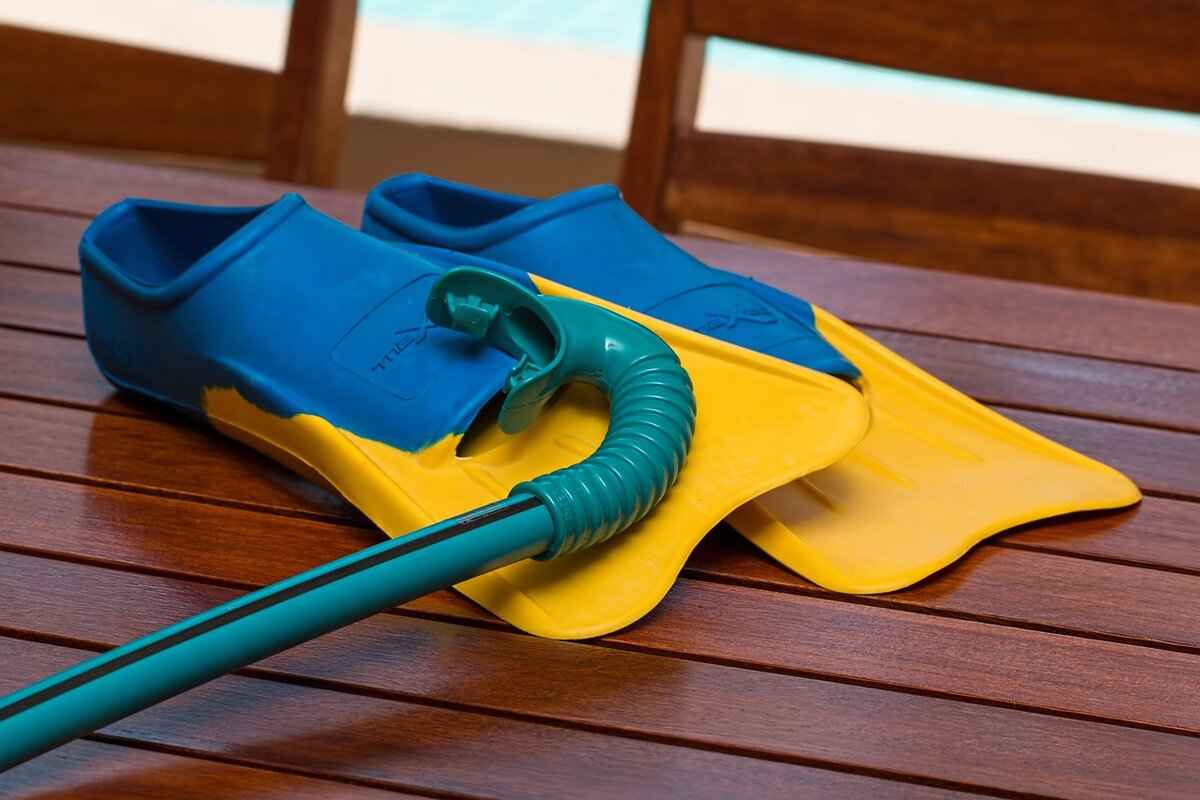
Step-by-Step Guide to Acid Washing Your Pool
Acid washing your pool is an essential maintenance task that can help restore its appearance and prolong its lifespan. Following a systematic approach is key to effectively acid washing your pool. This section breaks down the process into manageable steps, ensuring you can tackle this task with confidence and precision.
1. Preparing the Pool for Acid Washing
Preparation is crucial for a successful acid wash. Start by draining the pool completely. You can use a submersible pump for this task to ensure all water is removed efficiently. Once drained, remove any debris such as leaves, dirt, and other contaminants from the pool surface. This will allow the acid solution to work more effectively.
Next, it’s important to test the water chemistry before starting the acid wash. This step helps you understand the current chemical balance and ensures that you can restore it accurately after the wash. Check for pH levels and total alkalinity, as these factors can influence the effectiveness of the acid wash.
2. Mixing and Applying the Acid Solution
Once the pool is prepped, the next step involves mixing the acid solution. Use a commercial pool acid, typically muriatic acid, and follow the manufacturer’s instructions for dilution. A common ratio is one part acid to ten parts water, but always refer to the guidelines for specific recommendations.
When applying the acid solution, use a long-handled brush or a sprayer to ensure even coverage. Start at one end of the pool and work your way to the other, applying the solution in sections. Be cautious to avoid splashing and ensure proper ventilation if you are working in an enclosed area.
3. Scrubbing and Rinsing the Pool Surface
After applying the acid, it’s time to scrub the pool surface thoroughly. Use a stiff-bristled brush to work the acid into the stains and deposits. This step is critical for removing tough stains and mineral buildup. Pay extra attention to areas with visible discoloration or algae growth.
Once you’ve scrubbed the entire surface, it’s essential to rinse thoroughly with water. Use a garden hose or pressure washer to remove all acid residues. Failing to rinse adequately can lead to damage to your pool surface, so take your time to ensure all traces of acid are gone.
4. Balancing Pool Chemicals Post-Wash
After the acid wash, the pool water will need to be rebalanced. Test the water chemistry again to determine the pH, alkalinity, and chlorine levels. Typically, after an acid wash, the pH will drop significantly, so you may need to add a pH increaser to restore balance.
Maintaining the right chemical balance is essential for a safe swimming environment and helps prevent future buildup. Regular testing and adjustment will keep your pool water clear and inviting.
5. Establishing a Regular Maintenance Schedule
To minimize the need for frequent acid washes, it’s wise to establish a regular cleaning and maintenance schedule. This includes routine skimming, brushing, and vacuuming, along with regular chemical testing. By keeping your pool clean and well-maintained, you can extend the time between acid washes and maintain a sparkling clean swimming environment.
Preparing the Pool for Acid Washing
Preparing your pool for an acid wash is an essential step that can significantly impact the effectiveness of the cleaning process. Proper preparation ensures that the acid wash yields the best results, leaving your pool sparkling clean and ready for use. This section outlines the key steps involved in preparing your pool for acid washing, emphasizing the importance of each task.
The first step in preparing for an acid wash is to drain the pool completely. This process involves emptying the water to expose the pool surface, allowing for thorough cleaning. It is crucial to ensure that the pool is drained according to local regulations, as improper drainage can lead to environmental issues. Additionally, draining the pool provides an opportunity to inspect for any underlying problems, such as cracks or leaks, that might need attention before the acid wash.
Once the pool is drained, the next step is to remove debris from the pool surface. This includes leaves, dirt, and any other foreign materials that may have accumulated. Using a pool brush or a vacuum can help eliminate larger debris, while a skimmer net can be effective for smaller particles. Removing debris not only helps in the acid washing process but also prevents it from mixing with the acid solution, which could reduce its effectiveness.
Before proceeding with the acid wash, it is vital to test the water chemistry of the drained pool. This step involves checking the pH levels and total alkalinity of the water that remains in the plumbing system. Understanding the current chemical balance will help you determine the appropriate acid solution needed for the wash. If the pH is too high, it may indicate that the pool surface has accumulated mineral deposits, which can be effectively removed through acid washing.
Preparation also includes gathering all necessary tools and materials for the acid washing process. Essential items include:
- Acid Solution: Typically, muriatic acid is used for the wash.
- Protective Gear: Safety goggles, gloves, and masks are crucial for personal protection.
- Scrubbing Tools: A pool brush and pressure washer are essential for effective scrubbing and rinsing.
- Water Hose: For rinsing the pool thoroughly after the acid application.
Finally, it is important to inspect the pool surface for any damages or areas that may require special attention. Look for cracks, chips, or discoloration, as these may affect how the acid interacts with the surface. Documenting these areas will help you focus on them during the acid wash, ensuring a more thorough cleaning.
By following these preparation steps, you can set the stage for a successful acid wash that revitalizes your pool and enhances its longevity. Proper preparation not only maximizes the effectiveness of the acid wash but also ensures the safety of the process, making it a crucial phase in pool maintenance.
Mixing and Applying the Acid Solution
When it comes to acid washing a pool, the step of is pivotal for achieving optimal results. This process involves not only the correct dilution but also the right application techniques to ensure even coverage across the pool surface. Understanding these elements can make a significant difference in the effectiveness of the acid wash.
Mixing an acid solution requires careful attention to detail. The most commonly used acid for pool cleaning is muriatic acid, which is effective in removing stains and buildup. To prepare the solution, it’s essential to follow the manufacturer’s instructions regarding dilution. Typically, a mixture of 1 part acid to 10 parts water is recommended, but this can vary based on the severity of the staining and the type of pool surface.
Before mixing the acid, it’s crucial to prioritize safety. Always wear appropriate protective gear, including gloves, goggles, and a mask. Muriatic acid can release harmful fumes, so working in a well-ventilated area is vital. Additionally, always add acid to water, not the other way around, to prevent dangerous reactions that can lead to splashes or spills.
Once the acid solution is mixed, the next step is application. Using a pool brush or a sprayer can help distribute the solution evenly across the pool surface. Start from one end of the pool and work your way to the other, applying the solution in small sections. This method ensures that the acid has enough time to react with the stains without drying out too quickly, which can lead to uneven results.
The timing of the application is also important. Allow the acid solution to sit for a recommended duration, usually between 5 to 15 minutes, depending on the severity of the stains. However, keep a close eye on the surface; if you notice the acid is bubbling excessively or the surface is changing color too quickly, it may be necessary to rinse off the solution sooner to prevent damage.
After the acid has had sufficient time to work, thoroughly rinse the pool surface with water. This step is crucial to neutralize the acid and prevent any potential damage to the pool surface. Use a garden hose with a spray nozzle for effective rinsing, ensuring that all areas are covered. It’s also advisable to check the water chemistry afterward to ensure that the pH levels are balanced before refilling the pool.
- Incorrect Dilution: Always double-check the dilution ratios to avoid damaging the pool surface.
- Neglecting Safety Gear: Never skip on protective equipment; safety should always come first.
- Overapplication: Applying too much acid can result in etching or discoloration of the pool surface.
By following these guidelines for mixing and applying the acid solution, you can ensure a thorough and effective acid wash for your pool. This careful approach not only enhances the appearance of your pool but also contributes to a healthier swimming environment.
Scrubbing and Rinsing the Pool Surface
Scrubbing and rinsing the pool surface is a critical step in the acid washing process, ensuring that all contaminants are effectively removed and the pool is left in pristine condition. This section will delve into the importance of these actions, the best practices for scrubbing, and the necessary steps for rinsing to achieve optimal results.
After applying the acid solution, scrubbing the pool surface becomes essential to effectively remove stubborn stains and mineral deposits. The acid works to loosen these contaminants, but without the physical action of scrubbing, some residues may remain. This can lead to:
- Incomplete Stain Removal: If stains are not scrubbed away, they can reappear quickly, negating the benefits of the acid wash.
- Surface Damage: Residual acid can etch the pool surface if not rinsed properly, leading to long-term damage.
- Health Risks: Remaining contaminants can harbor bacteria and algae, compromising water quality.
To achieve the best results when scrubbing your pool surface, consider the following tips:
- Use the Right Brush: A pool brush with stiff bristles is ideal for scrubbing. Ensure it’s suitable for your pool surface type, whether it’s plaster, tile, or vinyl.
- Scrub in Sections: Divide the pool into manageable sections. This method ensures thorough coverage and allows you to monitor the effectiveness of your scrubbing.
- Apply Moderate Pressure: While it’s important to scrub vigorously, excessive force can damage the surface. Use a firm but gentle approach.
Once scrubbing is complete, rinsing thoroughly is crucial to remove any remaining acid and loosened debris. Here’s how to effectively rinse your pool:
- Use a High-Pressure Hose: A pressure hose can help wash away the acid and any remaining contaminants. Ensure the water is clean and free of additional chemicals.
- Check for Residue: After rinsing, inspect the pool surface for any remaining stains or acid residue. If necessary, repeat the scrubbing and rinsing process in areas that need extra attention.
- Drain Excess Water: If possible, drain the water used for rinsing to prevent it from re-entering the pool. This step ensures that no acid or contaminants linger in the pool.
After rinsing, it’s essential to perform a few final checks:
- Test Water Chemistry: Before refilling the pool, test the water chemistry to ensure it’s balanced. This step is vital for maintaining water quality.
- Inspect the Surface: Look for any missed spots or areas that require further attention. A thorough inspection helps ensure a truly clean pool.
- Clean Up Tools: Properly clean your scrubbing tools and any equipment used during the process. This maintenance prolongs the life of your tools and prepares them for future use.
By following these detailed steps for scrubbing and rinsing, you can ensure that your pool remains clean, safe, and inviting for all swimmers. Regular maintenance and proper acid washing techniques will enhance the longevity and appearance of your pool.
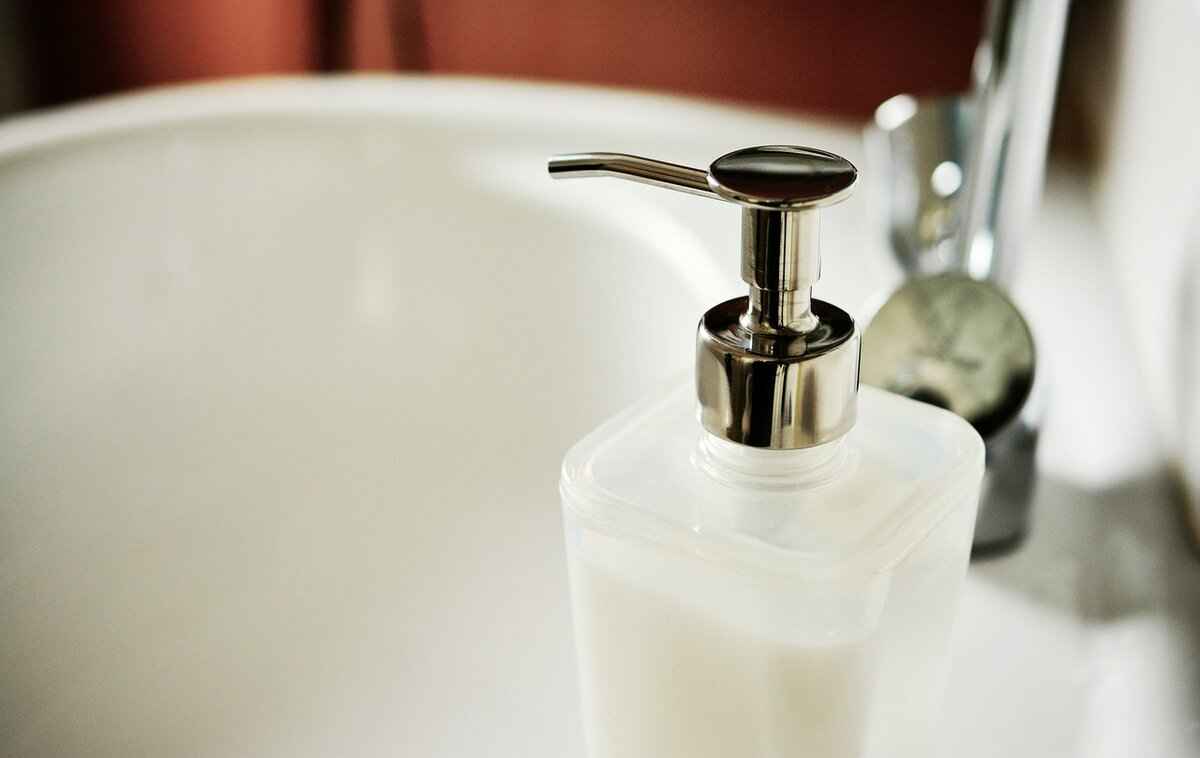
Post-Acid Wash Maintenance Tips
After completing the acid washing process, it is essential to implement a proper maintenance routine to ensure your pool remains clean, safe, and visually appealing. Neglecting this phase can lead to the recurrence of stains, algae growth, and a decline in water quality. Here are some critical tips for ongoing care:- Balancing Pool Chemicals:
Once the acid wash is finished, testing and balancing the pool’s chemical levels is crucial. This includes checking pH, alkalinity, and chlorine levels. Ideally, the pH should be between 7.2 and 7.8 to ensure comfortable swimming conditions. Regular testing can help prevent issues such as cloudy water or algae growth.
- Regular Cleaning and Maintenance Schedule:
Establishing a consistent cleaning schedule is vital for maintaining a pristine pool. This should include skimming the surface daily, vacuuming weekly, and brushing the walls and floor at least once a month. Regular maintenance minimizes the need for future acid washes and helps keep the pool’s surface in good condition.
- Monitoring Water Levels:
Keep an eye on the water levels, especially after heavy rains or evaporation during hot weather. Maintaining the correct water level is essential for effective filtration and chemical distribution. If the water level drops too low, it can lead to pump damage and inefficient cleaning.
- Using Pool Covers:
Investing in a quality pool cover can significantly reduce debris accumulation and prevent water evaporation. Covers not only keep the pool clean but also protect it from harsh weather conditions, which can lead to staining and algae growth.
- Regular Filter Maintenance:
Your pool’s filtration system plays a critical role in maintaining water clarity. Clean or replace filters as recommended by the manufacturer. This ensures that the filtration system operates efficiently, removing contaminants and preventing buildup on the pool surface.
- Checking for Leaks:
After an acid wash, it’s wise to inspect your pool for any leaks or cracks that may have gone unnoticed. Addressing these issues promptly can prevent further damage and reduce water loss, which is essential for maintaining water chemistry.
Incorporating these maintenance tips into your routine will not only enhance the longevity of your pool but also ensure a safe and enjoyable swimming experience. Remember, consistent care is the key to preventing the need for frequent acid washes and keeping your pool in sparkling condition.
Balancing Pool Chemicals
Maintaining a clean and safe swimming pool involves more than just regular cleaning; it requires careful attention to the chemical balance of the water. After an acid wash, the importance of testing and balancing pool chemicals cannot be overstated. This process is essential to ensure that the water remains clear, safe, and free from harmful bacteria and algae.
- Understanding Pool Chemistry: Pool water is a complex mixture of various chemicals, including chlorine, pH levels, alkalinity, and calcium hardness. Each of these elements plays a crucial role in maintaining water quality. For example, improper pH levels can lead to skin irritation or damage to pool surfaces.
- Testing Water Quality: After acid washing, the first step is to test the water using a reliable pool test kit. This kit will measure the levels of chlorine, pH, alkalinity, and other essential chemicals. Regular testing is vital, especially after significant cleaning processes like acid washing.
- Adjusting pH Levels: The ideal pH level for pool water is between 7.2 and 7.8. If the pH is too low, it can cause corrosion of metal fixtures and irritation to swimmers. Conversely, a high pH can lead to cloudy water and scaling. Use pH increasers or decreasers as needed to achieve the desired balance.
- Maintaining Chlorine Levels: Chlorine is essential for sanitizing pool water. After an acid wash, chlorine levels may fluctuate. The recommended level is between 1-3 parts per million (ppm). Adding chlorine tablets or liquid chlorine can help maintain these levels, ensuring that the water remains free from harmful microorganisms.
- Alkalinity and Calcium Hardness: Total alkalinity should ideally be between 80-120 ppm and helps stabilize pH levels. Calcium hardness should be maintained between 200-400 ppm to prevent corrosion and scaling. Adjust these levels using specific products designed for pools.
- Shock Treatment: After balancing chemicals, consider performing a shock treatment. This involves adding a higher dose of chlorine to eliminate any remaining contaminants, ensuring the water is sanitized effectively.
- Regular Maintenance Schedule: Establishing a routine for testing and balancing pool chemicals is crucial for long-term maintenance. Aim to check the water chemistry at least once a week, and more frequently during peak swimming seasons.
In conclusion, balancing pool chemicals after an acid wash is a vital step in maintaining a safe and inviting swimming environment. Regular testing and adjustments will not only enhance water quality but also prolong the life of the pool equipment and surfaces. By prioritizing chemical balance, pool owners can enjoy a sparkling clean pool that is safe for family and friends.
Regular Cleaning and Maintenance Schedule
Establishing a for your pool is essential to ensure its longevity and optimal performance. A consistent routine not only keeps your pool looking pristine but also minimizes the need for intensive treatments like acid washing. By investing time in regular upkeep, you can prevent the accumulation of dirt, algae, and mineral deposits that can harm your pool’s surface and water quality.
A well-structured cleaning schedule should include daily, weekly, and monthly tasks. Below is a breakdown of these essential tasks:
- Daily Cleaning Tasks:
- Check the water level and top it off if necessary.
- Skim the surface for debris such as leaves and insects.
- Inspect the skimmer and pump baskets, emptying them as needed.
- Weekly Cleaning Tasks:
- Brush the walls and floor of the pool to remove algae and buildup.
- Vacuum the pool to eliminate dirt and debris that has settled.
- Test and balance the water chemistry, adjusting pH and chlorine levels as necessary.
- Monthly Cleaning Tasks:
- Inspect and clean the pool filter to ensure it operates efficiently.
- Check the pool equipment for any signs of wear or damage.
- Perform a thorough acid wash if you notice significant staining or discoloration.
By adhering to this schedule, you can significantly reduce the frequency of acid washes. Regular maintenance prevents the buildup of stubborn stains and mineral deposits, which are often the culprits behind the need for acid washing. Additionally, maintaining clean water improves the overall swimming experience, making it safer and more enjoyable for everyone.
Moreover, keeping a detailed log of your cleaning activities can help you track the condition of your pool over time. This log can include dates of cleaning, chemical adjustments, and any observations about the pool’s condition. Such documentation can be invaluable when assessing whether more intensive cleaning methods, like acid washing, are necessary.
In conclusion, a consistent cleaning and maintenance schedule is key to a healthy swimming pool. Not only does it enhance the aesthetic appeal of your pool, but it also safeguards your investment by extending the lifespan of the pool surface. By prioritizing regular upkeep, you can enjoy a sparkling clean pool with minimal hassle.
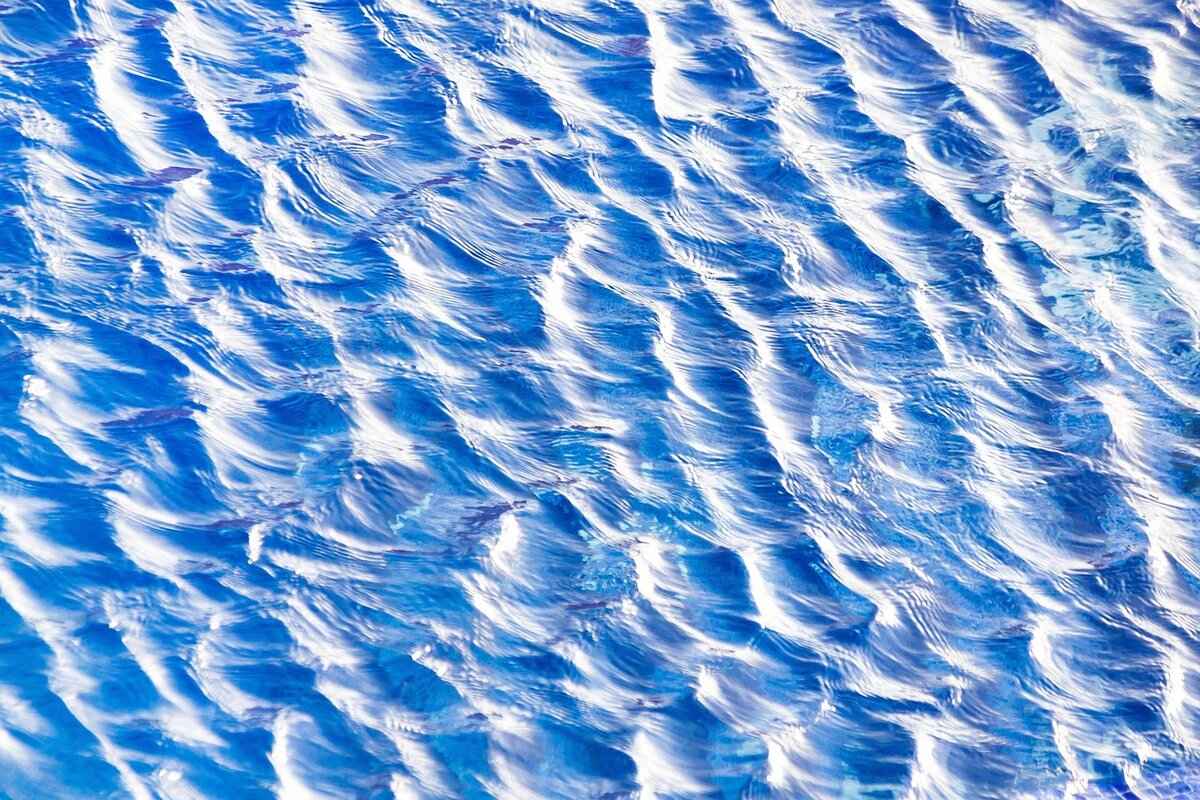
Common Mistakes to Avoid When Acid Washing
Acid washing your pool can be a highly effective method to restore its cleanliness and appearance. However, it is essential to be aware of the common mistakes that can compromise the effectiveness of the process and pose safety risks. This section outlines key pitfalls to avoid, ensuring a safer and more efficient acid washing experience.
- Neglecting Safety Precautions: One of the most critical mistakes is failing to prioritize safety. Acid is a hazardous substance that can cause severe burns and respiratory issues. Always wear appropriate safety gear, including gloves, goggles, and a mask, to protect yourself from harmful fumes and splashes.
- Overusing Acid Solutions: It might be tempting to use a stronger acid solution to achieve faster results, but overdoing it can lead to significant damage to your pool’s surface. Always adhere to recommended dilution ratios and application guidelines to avoid etching or discoloration of the surface.
- Ignoring Manufacturer Instructions: Each pool surface is different, and manufacturers often provide specific guidelines for acid washing. Ignoring these instructions can lead to ineffective cleaning or damage. Always consult your pool’s manufacturer recommendations before proceeding.
- Inadequate Preparation: Proper preparation is crucial for effective acid washing. Failing to drain the pool correctly, remove debris, or test water chemistry can result in uneven cleaning and potential chemical reactions. Ensure the pool is fully prepped before applying any acid solutions.
- Skipping the Rinsing Step: After applying the acid solution, thorough rinsing is essential. Neglecting this step can leave acid residue that may continue to damage the pool surface over time. Always rinse the area completely to neutralize the acid.
- Not Considering Weather Conditions: Acid washing should ideally be done on a dry, sunny day. Rain or high humidity can dilute the acid and reduce its effectiveness. Plan your acid washing on a day with favorable weather conditions to achieve optimal results.
- Failing to Test Water Chemistry Post-Wash: After acid washing, it’s vital to test and balance the pool chemicals. Neglecting this step can lead to imbalanced water chemistry, resulting in cloudy water or algae growth. Regularly check pH levels and adjust accordingly.
By avoiding these common mistakes, you can ensure that your acid washing process is both effective and safe. Proper preparation, adherence to guidelines, and attention to safety can lead to a sparkling clean pool that enhances your swimming experience. Remember, a well-maintained pool not only looks great but also provides a healthier environment for you and your family.
Neglecting Safety Precautions
When engaging in the process of acid washing a pool, it is crucial to understand that can lead to serious injuries. The use of potent chemicals, such as muriatic acid, necessitates a heightened awareness of safety measures to protect yourself and others. This section delves into the importance of wearing appropriate safety gear and adhering to safety protocols during the acid washing process.
Wearing the right safety gear is non-negotiable when working with acids. The following items are essential to ensure your safety:
- Gloves: Chemical-resistant gloves protect your skin from burns and irritation.
- Goggles: Safety goggles shield your eyes from splashes and harmful fumes.
- Face Mask: A mask or respirator can help prevent inhalation of toxic vapors.
- Protective Clothing: Long sleeves and pants made from durable materials can prevent skin contact.
Each of these items plays a vital role in safeguarding your health. For example, acid splashes can cause severe burns, and inhaling fumes can lead to respiratory issues. Thus, it is imperative to equip yourself adequately before starting the acid washing process.
Acid washing involves inherent risks, particularly when handling strong chemicals. Here are some potential hazards:
- Chemical Burns: Direct contact with acid can cause painful burns on the skin.
- Eye Damage: If acid comes into contact with your eyes, it can lead to permanent damage.
- Respiratory Problems: Inhaling acid vapors can irritate the lungs and lead to serious health issues.
Awareness of these risks emphasizes the necessity of using safety gear and following safety protocols. Always read the labels and safety data sheets of the chemicals you are using to understand their properties and hazards.
To ensure a safe acid washing experience, consider these best practices:
- Work in a Well-Ventilated Area: Ensure that the area is well-ventilated to minimize inhalation risks.
- Keep a First Aid Kit Handy: In case of accidental exposure, having a first aid kit nearby can be invaluable.
- Have a Buddy System: It’s safer to work with a partner who can assist in case of an emergency.
- Follow Manufacturer Instructions: Always adhere to the manufacturer’s guidelines for mixing and applying acid solutions.
Implementing these practices not only enhances safety but also contributes to a more effective acid washing process.
In the event of an accident, knowing how to respond is crucial:
- Skin Contact: Rinse the affected area with plenty of water and seek medical attention if necessary.
- Eye Contact: Flush the eyes with water for at least 15 minutes and seek immediate medical help.
- Inhalation: Move to fresh air immediately and seek medical attention if breathing difficulties occur.
Being prepared for emergencies can significantly reduce the severity of injuries and ensure a swift response when needed.
In conclusion, prioritizing safety during the acid washing process is essential. By wearing appropriate safety gear, understanding the risks, following best practices, and being prepared for emergencies, you can minimize the likelihood of accidents and injuries. Always remember that safety should never be compromised when working with hazardous materials.
Overusing Acid Solutions
When it comes to maintaining a pool, acid washing can be a highly effective method for restoring its beauty and functionality. However, one of the most critical aspects of this process is understanding the risks associated with . Using too much acid can lead to significant damage to the pool surface, which can be costly and time-consuming to repair.
Acid washing typically involves the use of strong acids, such as muriatic acid, to eliminate stubborn stains, algae, and mineral deposits. While these acids are effective, they can also be very harsh. If not used correctly, they can cause etching, discoloration, and even structural damage to the pool’s surface. Therefore, it is essential to follow proper guidelines for dilution and application.
One of the most common mistakes pool owners make is using undiluted acid. Proper dilution is crucial to minimize the risks associated with acid washing. A typical recommendation is to dilute the acid at a ratio of 1 part acid to 10 parts water. This ensures that the solution is effective in cleaning without being overly harsh on the pool surface.
When applying the acid solution, it’s vital to use the right techniques to prevent overexposure of the pool surface to the acid. Here are some practical tips:
- Start from the shallow end: Begin applying the acid solution from the shallow end and work your way to the deep end. This allows for better control and minimizes the risk of acid pooling in one area.
- Use a brush: After applying the acid, use a pool brush to scrub the surface gently. This helps to evenly distribute the acid and ensures that it penetrates the stains without remaining in one spot for too long.
- Rinse thoroughly: Once the scrubbing is complete, rinse the pool surface thoroughly with water. This step is critical to remove any residual acid that could cause damage over time.
After acid washing, it’s important to keep a close eye on the pool surface. Look for signs of etching or discoloration, which can indicate that too much acid was used or that it was not properly diluted. If you notice any damage, it may be necessary to consult with a pool professional to assess the situation and determine the best course of action.
In summary, while acid washing can be a beneficial maintenance procedure, overusing acid solutions poses significant risks to your pool’s surface. By adhering to proper dilution guidelines, employing effective application techniques, and monitoring the pool after the process, you can achieve a sparkling clean pool without compromising its integrity. Remember, when in doubt, it’s always best to consult with a professional to ensure the longevity and beauty of your pool.
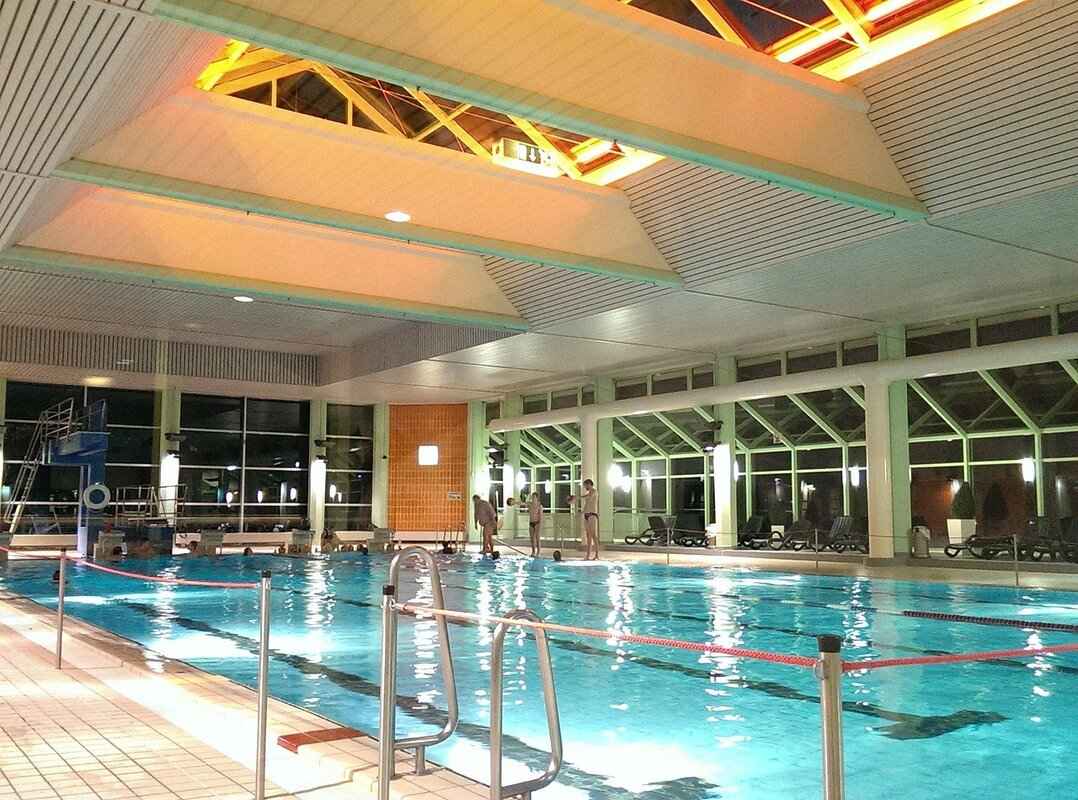
Alternative Methods for Pool Cleaning
Maintaining a clean and inviting pool is essential for both aesthetic and health reasons. While acid washing is a popular method for removing stubborn stains and buildup, there are several alternative cleaning methods that can effectively keep your pool in top condition. This section delves into various options, providing insights into their advantages and practical applications.
Using a Pressure Washer
One of the most effective alternatives to acid washing is the use of a pressure washer. This method employs high-pressure water jets to remove dirt, algae, and other contaminants from the pool surface. Here are the benefits of using a pressure washer:
- Environmentally Friendly: Unlike chemical cleaners, pressure washing uses only water, making it a safe and eco-friendly option.
- Cost-Effective: Many pool owners already have access to a pressure washer, eliminating the need for additional cleaning products.
- Versatile: Pressure washers can be used on various surfaces, including tiles, concrete, and vinyl, making them suitable for different pool types.
To effectively use a pressure washer, ensure that you adjust the nozzle to a suitable setting to avoid damaging the pool surface. Start from a distance and gradually move closer as needed.
Enzyme-Based Cleaners
Another gentle yet effective cleaning method involves the use of enzyme-based cleaners. These products utilize natural enzymes to break down organic materials, such as leaves, oils, and algae, without the harshness associated with acid. Here’s why enzyme-based cleaners can be a great choice:
- Safe for All Surfaces: These cleaners are non-corrosive and can be safely used on all pool surfaces, including plaster, tile, and vinyl.
- Preventative Maintenance: Regular use can prevent the buildup of organic materials, reducing the need for more aggressive cleaning methods.
- Biodegradable: Most enzyme cleaners are environmentally friendly and do not harm aquatic life, making them a responsible choice for pool owners.
To use enzyme-based cleaners, simply follow the manufacturer’s instructions for dilution and application. Regular application can help maintain a clean pool with minimal effort.
Robotic Pool Cleaners
In recent years, robotic pool cleaners have gained popularity for their efficiency and ease of use. These automated devices navigate the pool, cleaning the bottom and walls without the need for manual intervention. Key benefits include:
- Time-Saving: Robotic cleaners operate independently, allowing you to spend more time enjoying your pool rather than cleaning it.
- Thorough Cleaning: Equipped with advanced filtration systems, these robots can capture fine debris that traditional cleaning methods might miss.
- Energy Efficient: Many models are designed to use minimal energy, making them cost-effective in the long run.
When selecting a robotic cleaner, consider the size and shape of your pool, as well as the type of debris commonly found in your water.
Manual Pool Cleaning
For those who prefer a hands-on approach, manual cleaning remains a viable option. This method involves using tools like pool skimmers, brushes, and vacuums to remove debris and scrub surfaces. Benefits of manual cleaning include:
- Control: You have complete control over the cleaning process, allowing you to focus on specific areas that may require extra attention.
- Cost-Effective: Manual cleaning requires minimal investment in tools, making it accessible for all pool owners.
- Immediate Results: You can see the results of your efforts in real-time, ensuring that your pool looks pristine after each cleaning session.
To effectively clean your pool manually, establish a regular routine that includes skimming, brushing, and vacuuming to maintain optimal cleanliness.
Conclusion
While acid washing is a powerful method for deep cleaning pools, these alternative methods provide effective solutions for maintaining cleanliness without the need for harsh chemicals. Whether you choose to use a pressure washer, enzyme-based cleaners, robotic cleaners, or manual tools, each option has its unique advantages that cater to different needs and preferences. By exploring these alternatives, pool owners can ensure a sparkling clean swimming environment throughout the season.
Using a Pressure Washer
A pressure washer is an innovative tool that can significantly enhance your pool cleaning routine. Unlike traditional methods that may involve harsh chemicals, a pressure washer provides a gentler yet effective solution for maintaining pool surfaces. This method is particularly beneficial for routine maintenance, helping to keep your pool looking pristine without the risks associated with acid washing.
One of the primary advantages of using a pressure washer is its ability to remove dirt, algae, and other debris from pool surfaces without damaging the material. The high-pressure water stream effectively dislodges contaminants, making it easier to achieve a clean finish. This is especially important for pool owners who may be concerned about the integrity of their pool surface over time.
- Environmentally Friendly: Pressure washing uses only water and does not require the use of harsh chemicals, making it an eco-friendly choice.
- Time Efficient: The speed at which a pressure washer cleans can save you valuable time compared to manual scrubbing.
- Versatile Application: Beyond pool surfaces, pressure washers can be used on surrounding areas such as decks and patios, providing a comprehensive cleaning solution.
Using a pressure washer effectively requires some preparation and technique. Here are the steps to follow:
- Gather Your Equipment: Ensure you have a pressure washer, appropriate nozzles, and safety gear such as goggles and gloves.
- Prepare the Area: Remove any loose debris or furniture around the pool area to create a safe workspace.
- Select the Right Nozzle: Choose a nozzle that provides a wide spray pattern to avoid damaging the pool surface. A 25-degree nozzle is often ideal for cleaning.
- Test the Pressure: Start at a low pressure setting to assess the impact on the pool surface before increasing the intensity.
- Clean in Sections: Work methodically around the pool, applying the pressure washer in sections to ensure thorough coverage.
- Rinse and Inspect: After cleaning, rinse the area with water to remove any remaining debris and inspect for any missed spots.
While pressure washing is generally safe, it’s important to take certain precautions:
- Wear Protective Gear: Always wear safety goggles and gloves to protect yourself from debris and water spray.
- Be Mindful of Electrical Outlets: Ensure that all electrical outlets and cords are kept dry to prevent electrical hazards.
- Maintain a Safe Distance: Keep a safe distance from the pool edge and avoid aiming the nozzle directly at anyone nearby.
In conclusion, using a pressure washer for pool maintenance is a practical and efficient method for keeping your pool clean. It not only eliminates the need for harsh chemicals but also saves time and effort. By following proper techniques and safety precautions, you can ensure that your pool remains a sparkling oasis for relaxation and enjoyment.
Enzyme-Based Cleaners
When it comes to maintaining the cleanliness of your pool, offer a gentler and more environmentally friendly solution compared to traditional chemical cleaners. These products utilize natural enzymes to break down organic materials, which are often the culprits behind cloudy water and unpleasant odors. Unlike harsh acids, enzyme cleaners provide a safe alternative that is effective yet gentle on pool surfaces.
Enzyme cleaners work through a process known as biodegradation. This means that the enzymes target specific organic contaminants, such as leaves, oils, and algae, and break them down into smaller, harmless compounds. As a result, these cleaners can significantly reduce the buildup of organic matter in your pool, enhancing both water clarity and quality. This method is particularly beneficial for those looking to maintain a healthy swimming environment without exposing swimmers to harsh chemicals.
Another significant advantage of enzyme-based cleaners is their non-toxic nature. Many conventional pool cleaning products contain harsh chemicals that can irritate skin and eyes, as well as contribute to environmental pollution. In contrast, enzyme cleaners are safe for both users and the surrounding ecosystem. This makes them an excellent choice for families with children or pets who may be more sensitive to chemical exposure.
Using enzyme-based cleaners is also straightforward. Typically, you simply add the recommended amount to your pool water, and the enzymes get to work immediately. They are especially effective when used regularly, as they help to prevent the accumulation of organic debris and maintain a consistently clean pool. This proactive approach can save pool owners time and effort in the long run, reducing the need for more intensive cleaning methods like acid washing.
Furthermore, enzyme cleaners are often compatible with other pool maintenance products. They can be used alongside chlorine or bromine sanitizers without causing adverse reactions. This compatibility allows pool owners to create a comprehensive cleaning regimen that maximizes the effectiveness of all products used.
In summary, enzyme-based cleaners provide a gentle yet effective solution for maintaining pool cleanliness. They break down organic materials without the need for harsh acids, making them a safer and more environmentally friendly option. By incorporating enzyme cleaners into your regular pool maintenance routine, you can enjoy a sparkling clean pool while minimizing the impact on both your health and the environment.

Cost Considerations for Acid Washing
Understanding the costs associated with acid washing is crucial for effective budgeting and planning. Acid washing your pool can be a significant investment, and knowing the potential expenses helps you make informed decisions. This section outlines various factors that influence pricing and provides insights into average costs, enabling you to prepare financially for this maintenance task.
- Pool Size: The size of your pool is one of the most significant factors affecting the cost of acid washing. Larger pools require more time and materials, leading to higher expenses.
- Condition of the Pool: If your pool has extensive staining or buildup, it may require more intensive cleaning efforts, which can increase labor costs.
- Location: Prices can vary based on geographic location. Areas with a higher cost of living may have higher service rates.
- DIY vs. Professional Services: Choosing to acid wash your pool yourself can save money on labor costs, but you will still need to purchase the necessary materials and safety gear.
- Seasonal Demand: The time of year can also affect pricing. Demand for pool services typically increases during warmer months, potentially raising prices.
The average cost for acid washing a pool can range from $300 to $500 for a standard-sized residential pool. However, costs can vary significantly based on the factors mentioned above. Below is a breakdown of typical expenses:
| Pool Size | Average Cost |
|---|---|
| Small (up to 15,000 gallons) | $300 – $400 |
| Medium (15,000 – 25,000 gallons) | $400 – $500 |
| Large (over 25,000 gallons) | $500 – $700 |
For those opting for DIY acid washing, the cost of materials typically ranges from $50 to $150, depending on the type and amount of acid used, as well as any additional cleaning supplies you may need.
Deciding between DIY acid washing and hiring professionals can significantly impact your budget. While DIY may seem cost-effective, it requires knowledge and experience to ensure safety and effectiveness. Hiring a professional service may incur higher costs, but it guarantees a thorough job and minimizes the risk of damage to your pool.
In conclusion, understanding the costs associated with acid washing allows you to budget effectively and choose the best option for your pool maintenance needs. By considering the various factors that influence pricing and weighing the pros and cons of DIY versus professional services, you can make an informed decision that aligns with your financial situation and pool care requirements.
DIY vs. Professional Services
When it comes to acid washing your pool, the decision between doing it yourself (DIY) or hiring professional services can have a significant impact on both your budget and the outcome of the cleaning process. Each option has its own set of advantages and disadvantages that should be carefully considered before making a choice.
One of the primary reasons many pool owners consider a DIY approach is the potential for cost savings. By taking on the task yourself, you can avoid labor fees associated with hiring professionals. However, it’s essential to factor in the costs of materials and equipment needed for the job. This includes:
- Acid solution
- Protective gear (gloves, goggles, masks)
- Tools (pressure washer, scrubbing brush, hose)
While the initial investment for these supplies may seem manageable, the total cost can add up, especially if you need to purchase specialized equipment. Additionally, if you make mistakes during the process, such as overusing acid or failing to neutralize the surface properly, you could incur further expenses for repairs.
Choosing to acid wash your pool yourself can provide several benefits:
- Flexibility: You can schedule the work at your convenience without having to coordinate with a service provider.
- Learning Experience: DIY projects can be educational, allowing you to gain valuable skills and knowledge about pool maintenance.
- Sense of Accomplishment: Successfully completing the task can give you a sense of pride and satisfaction.
Despite the benefits, there are also notable challenges associated with DIY acid washing:
- Safety Risks: Working with acid can be hazardous. Without proper safety precautions, you risk injury or damage to your pool.
- Time-Consuming: The process can be labor-intensive and may take longer than anticipated, especially for inexperienced individuals.
- Quality of Work: Without professional experience, the results may not meet your expectations, leading to the need for additional cleaning or repairs.
On the other hand, hiring professional services for acid washing comes with its own set of advantages:
- Expertise: Professionals have the training and experience to perform the job efficiently and effectively.
- Safety: They are equipped with the necessary safety gear and knowledge to handle hazardous materials safely.
- Time-Saving: Professionals can complete the job more quickly, allowing you to enjoy your pool sooner.
While the benefits are compelling, there are also some drawbacks to consider:
- Cost: Hiring professionals can be significantly more expensive than a DIY approach, especially for large pools.
- Scheduling: You may need to wait for availability, which can delay the cleaning process.
- Less Control: You may have less control over the methods and products used during the cleaning.
Ultimately, the decision between DIY acid washing and hiring professionals depends on various factors, including your budget, experience level, and the specific condition of your pool. If you feel confident in your ability to perform the task safely and effectively, a DIY approach may be suitable. However, if you prefer peace of mind and a guarantee of quality results, hiring a professional service may be the better option.
Average Costs for Acid Washing
When it comes to maintaining a pool, acid washing is a crucial process that can restore its original beauty and functionality. However, understanding the is essential for pool owners to budget effectively. This section provides a comprehensive overview of the costs associated with acid washing, along with the various factors that can influence pricing.
The cost of acid washing a pool can vary widely based on several key factors. Here are some of the most significant:
- Pool Size: The size of the pool is one of the most influential factors when determining the cost of acid washing. Larger pools require more time and materials, leading to higher costs.
- Condition of the Pool: A pool that has not been maintained for an extended period may have more severe staining and buildup, necessitating more intensive cleaning and potentially increasing costs.
- Location: Prices can vary based on geographical location. Urban areas may have higher service fees compared to rural regions.
- Professional vs. DIY: Hiring a professional service typically costs more than doing it yourself. While DIY may save money, it requires knowledge and proper safety precautions.
- Time of Year: The demand for pool services can fluctuate with the seasons. Rates may increase during peak swimming season due to higher demand.
On average, the cost of acid washing a pool ranges from $300 to $800. Here’s a more detailed breakdown:
| Pool Size | Estimated Cost |
|---|---|
| Small (up to 15,000 gallons) | $300 – $400 |
| Medium (15,000 – 25,000 gallons) | $400 – $600 |
| Large (over 25,000 gallons) | $600 – $800 |
In addition to the basic costs of acid washing, there may be additional expenses to keep in mind:
- Water Refilling: After acid washing, you may need to refill the pool, which can add to the overall cost depending on local water rates.
- Chemical Balancing: Post-wash, it’s essential to balance the pool chemicals, which may involve purchasing additional products.
- Repairs: If the acid washing reveals underlying issues with the pool surface, repairs may be necessary, leading to further expenses.
To help manage costs, consider the following tips:
- Schedule Off-Peak: If possible, schedule your acid wash during the off-peak season to take advantage of lower rates.
- Bundle Services: Some pool service companies offer discounts for bundling multiple services, such as cleaning and maintenance.
- Regular Maintenance: Implementing a regular maintenance schedule can reduce the frequency of acid washes, thus saving money in the long run.
In conclusion, understanding the average costs for acid washing and the factors that influence pricing is vital for pool owners. By considering the size and condition of the pool, along with additional costs and potential savings, you can make informed decisions about maintaining your swimming environment.
Frequently Asked Questions
- What is acid washing and why should I do it?
Acid washing is a cleaning process that removes stubborn stains, algae, and mineral deposits from your pool’s surface. It’s essential for maintaining a clean and inviting swimming environment, especially when regular cleaning methods fall short.
- How often should I acid wash my pool?
The frequency of acid washing depends on several factors, including water clarity and visible stains. Generally, it’s recommended to acid wash your pool once every 1-3 years, or whenever you notice significant discoloration or buildup.
- Is it safe to acid wash my pool myself?
While you can certainly DIY acid washing, safety is key! Make sure to wear appropriate gear, including gloves, goggles, and a mask. If you’re unsure or uncomfortable, hiring a professional might be the best choice.
- What tools do I need for acid washing?
You’ll need a few essential tools: a pressure washer, a pool brush, a garden hose, and, of course, the acid solution. Having the right equipment makes the process smoother and more effective.
- Can I use alternative cleaning methods instead of acid washing?
Absolutely! Options like pressure washing and enzyme-based cleaners can effectively maintain your pool without the harshness of acid. These methods are great for routine maintenance and can help prevent the need for acid washing.

